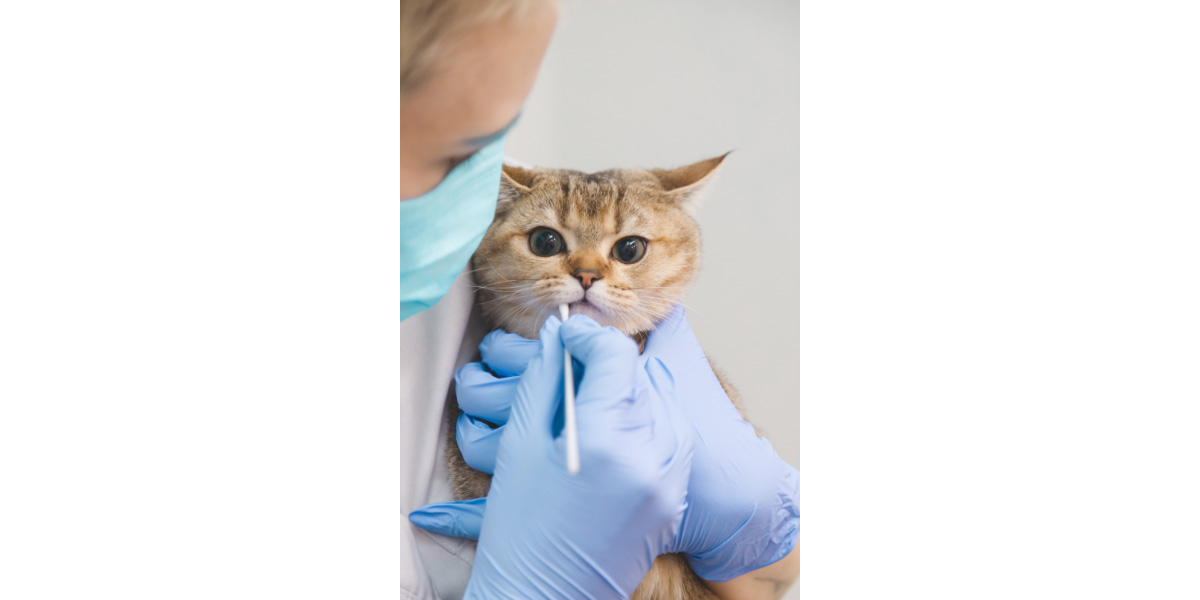
Have you heard of tooth resorption? This painful dental condition affects anywhere from 40% to 60% of adult cats, yet there’s so much we don’t know about it. For unknown reasons, the body actually breaks down the tooth from the inside out, sometimes causing cavity-like holes in the enamel. Get to know this devastating condition and how you can make sure your cat receives proper care.
What is Tooth Resorption in Cats?
In kittens, cells called odontoclasts are responsible for dissolving the roots of baby teeth, allowing them to fall out to make space for their adult teeth to grow in. Once the cat is fully grown, odontoclast cells become dormant.
When a cat develops tooth resorption, for unknown reasons, odontoclast cells reactivate, breaking down healthy dentin tissue inside adult teeth. Resorption most commonly affects the third premolars in the lower jaw, but can affect any tooth. Cats with one affected tooth usually have multiple teeth at varying stages of resorption.
There are two types of tooth resorption in cats: Type 1 and Type 2.
With Type 1 tooth resorption, the crown, or the part of the tooth visible above the gumline, is affected. The root and the ligament that attaches the tooth to the jaw appears normal in x-rays. With this type, the entire tooth must be extracted, or the affected root will remain and continue to cause pain.
With Type 2 tooth resorption, the root of the tooth is affected. The root will actually break down and turn into bone, and it will become replaced by bone. The jaw bone and the root will actually fuse and become impossible to separate. With this type, the crown will have to be separated from the now-bony root and extracted, leaving the root behind.
Symptoms of Tooth Resorption
Kittens under two years old rarely have signs of resorption. Those at around four to six years of age may have early stages of resorption, but noticeable symptoms and visible lesions are not usually apparent until the cat is over six years old.
Cats tend to not show signs of pain until later stages of resorption. Your cat may lose weight, seem disinterested in food, or they may attempt to eat, but food may drop out of their mouth.
Sometimes, you can see visible lesions on the surface of affected teeth, as the dentin will have broken down through to the enamel. The hole often fills with gum tissue, so you might see a cavity-like hole close to the gumline with a pink center. The irregular surface of affected teeth can cause plaque and tartar to accumulate, and the cat can be more susceptible to bad breath and red, swollen gums, which indicates gingivitis.
Preventing Tooth Resorption in Cats
Nobody knows why so many cats develop tooth resorption. Unlike cavities in humans, resorption lesions are not caused by bacteria. However, inflammation from periodontal disease may contribute to the condition.
It has also been linked to high levels of vitamin D in their diet, but research studies have been contradictory. It has also been theorized that the lesions are caused by high acidity in commercial cat food, or exposure to stomach acids due to hairball regurgitation, but no direct link has been confirmed.
Treatment and Prognosis for Cats with Tooth Resorption
Unfortunately, there is no cure for tooth resorption in cats. Lesions can be temporarily restored with a dental filling, but this will not stop resorption from happening. The tooth will continue to deteriorate and will eventually fall out.
Currently, the best treatment is to remove the affected teeth. Resorption is incredibly painful, even in cats that do not show outward signs of pain, and removal is the only way to ease the discomfort.
Some cats lose just one tooth, but most will develop some stage of resorption in more teeth throughout their lifetime. Not all affected teeth will necessarily progress to the point of requiring treatment. Your veterinarian may recommend annual or twice-annual x-rays to monitor your cat’s teeth.
While there is no confirmed link to dental hygiene, brushing your cat’s teeth will help keep them healthy and give you regular opportunities to monitor for symptoms.
































